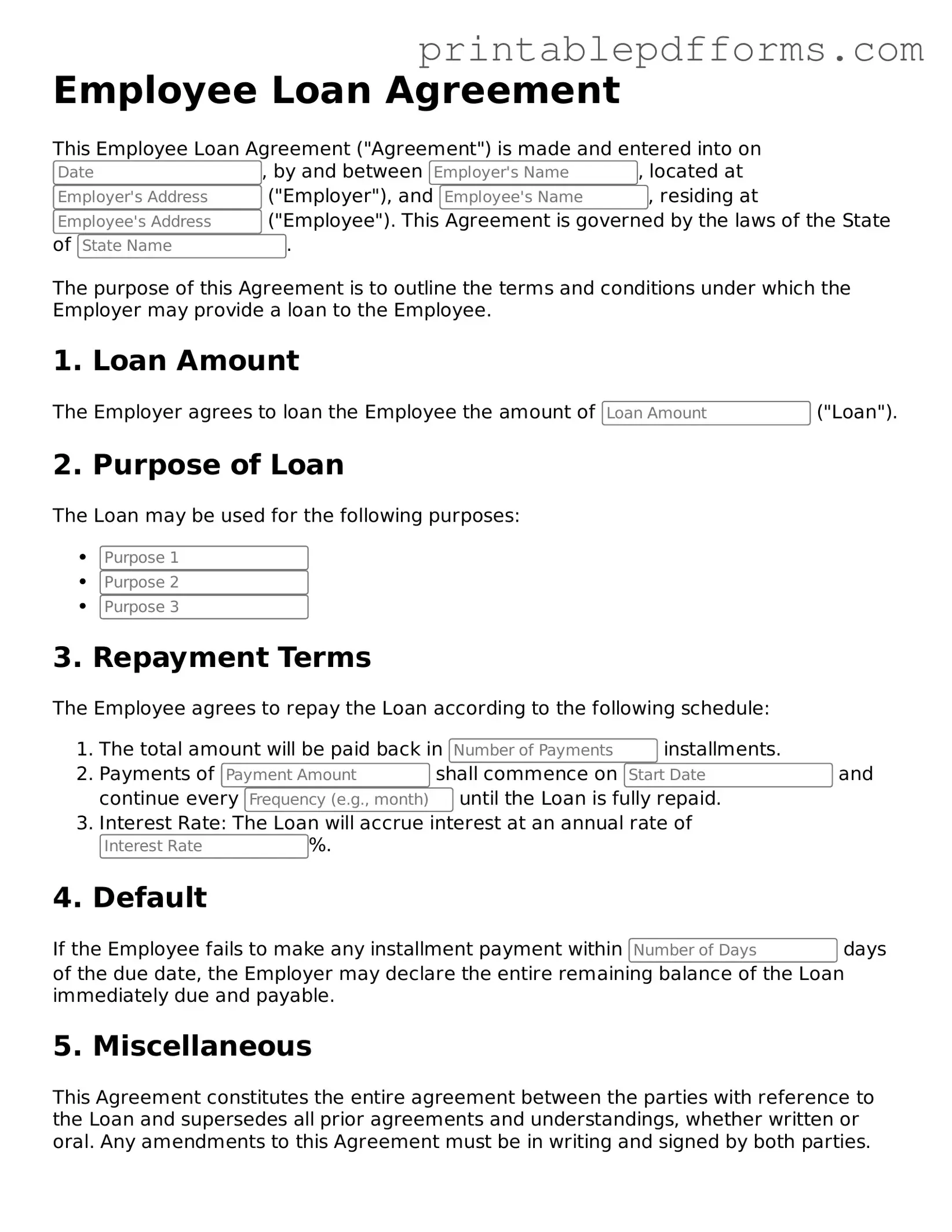Blank Employee Loan Agreement Form
An Employee Loan Agreement form is a document that outlines the terms and conditions under which an employer lends money to an employee. This agreement serves to protect both parties by clearly stating the repayment schedule, interest rates, and other relevant details. To ensure a smooth process, consider filling out the form by clicking the button below.
Create This Document Online
